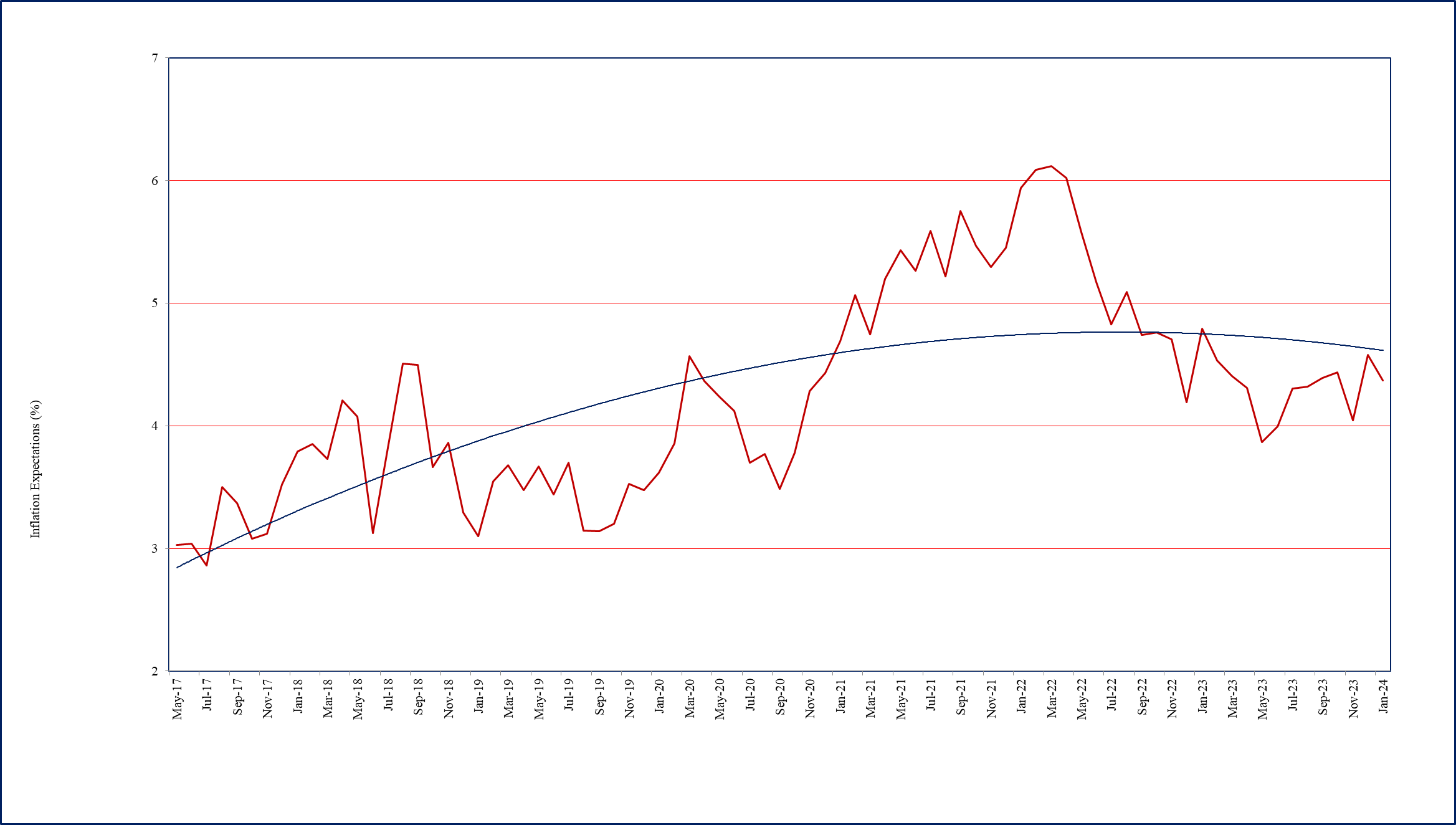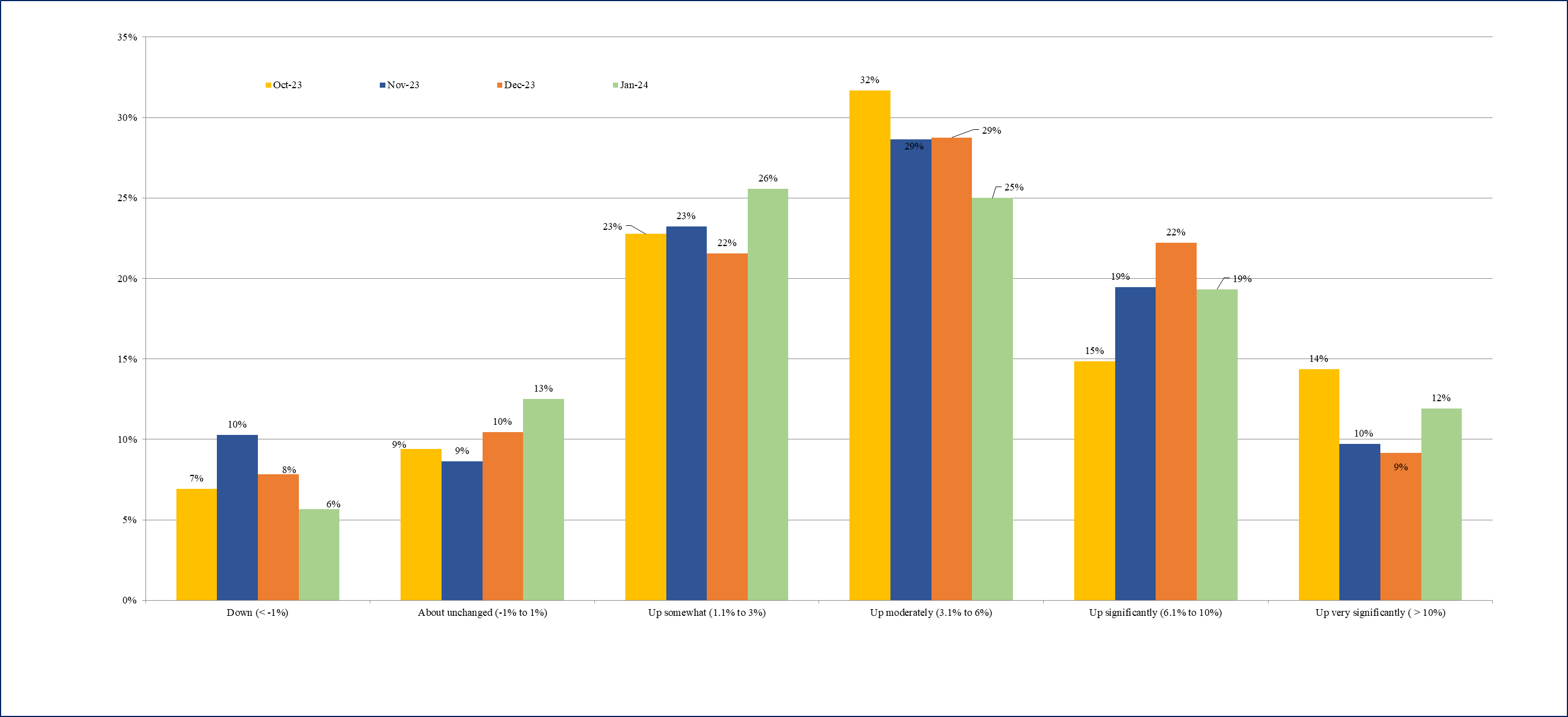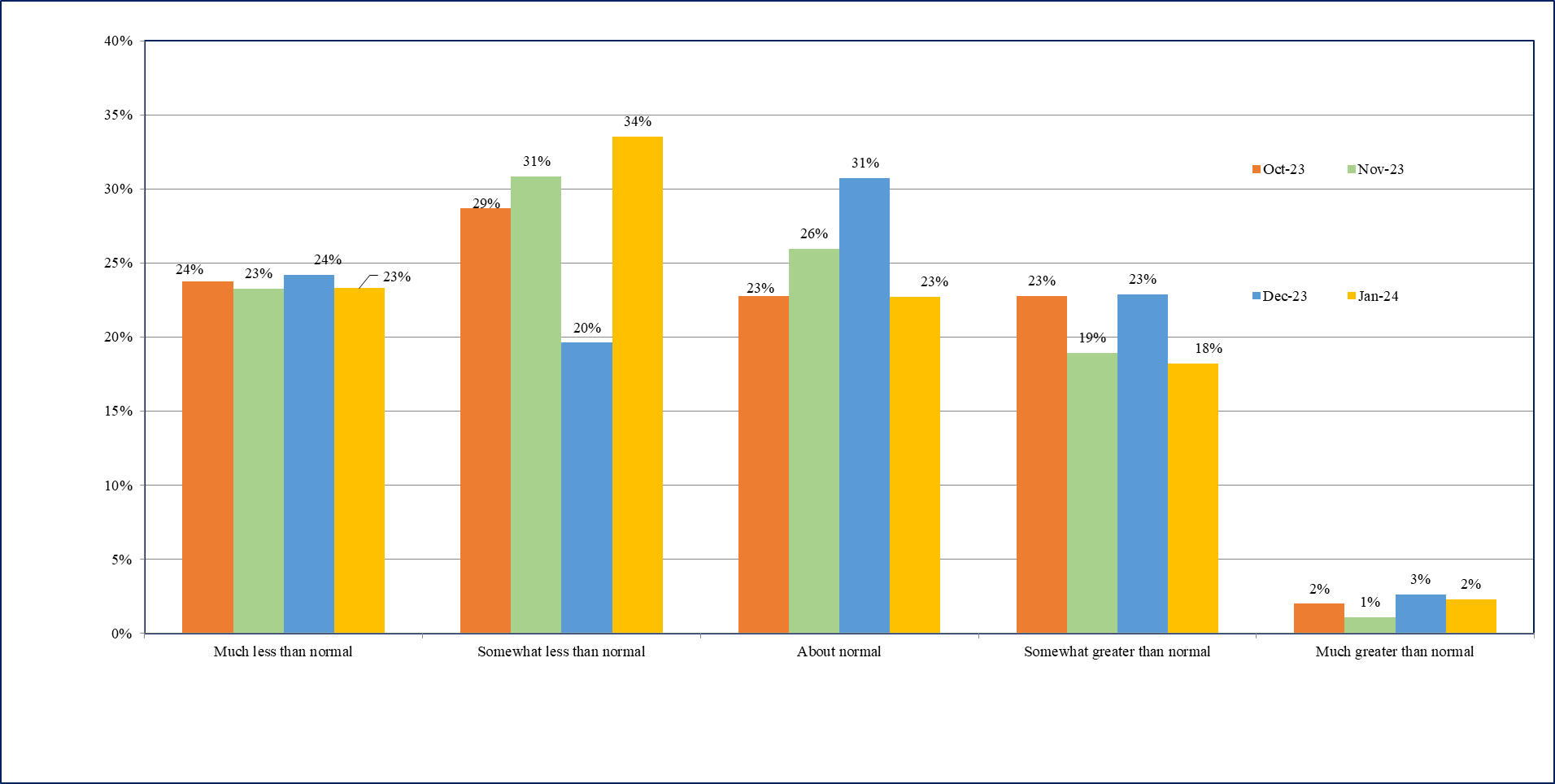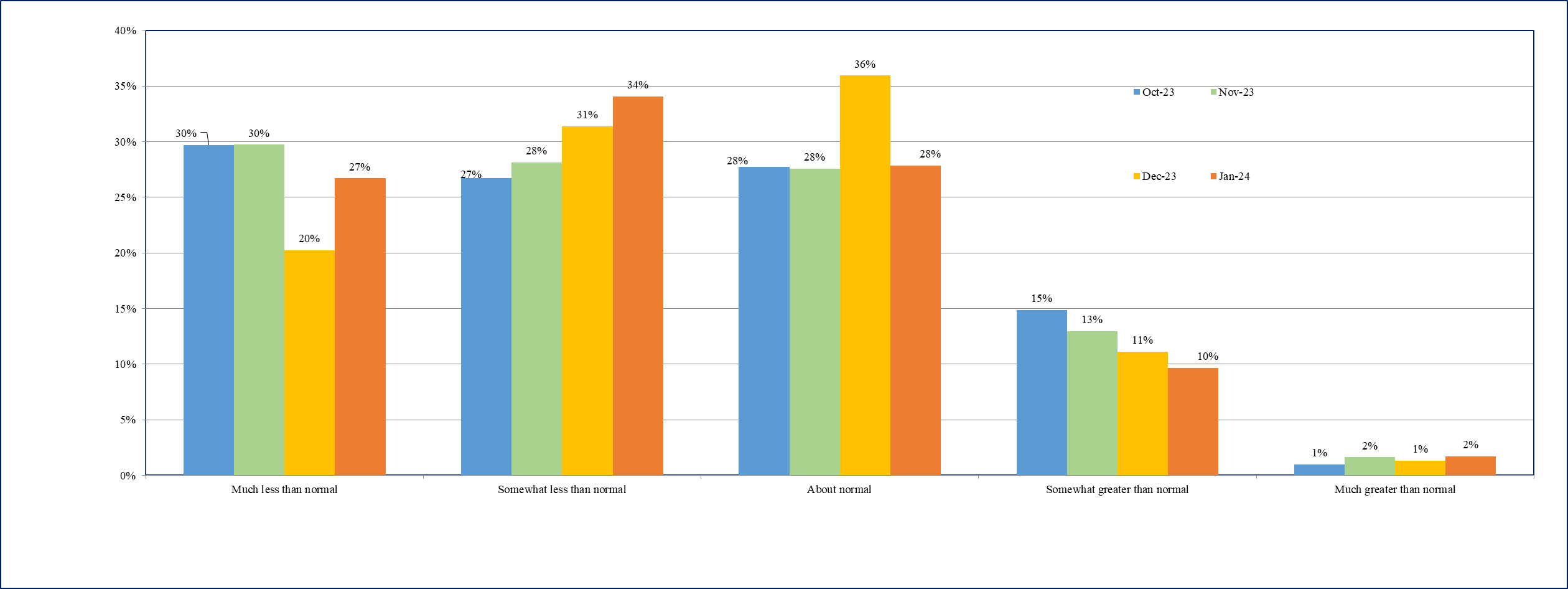
A. Inflation expectations
One year ahead business inflation expectation, as estimated from the mean of individual probability distribution of unit cost increase, has declined by 21 basis points to 4.37% in January 2024 from 4.58% reported in December 2023. Average inflation expectation of the firms for the past six consecutive months works out to be around 4.3%. The trajectory of one year ahead business inflation expectations is presented in Chart 1.
The uncertainty of business inflation expectations in January 2024 as captured by the square root of the average variance of the individual probability distribution of unit cost increase, increased sharply to 1.99% from 1.88% reported in December 2023.
Chart 1: One year ahead business inflation expectations (%)

B. Costs
1 The Business Inflation Expectations Survey (BIES) provides ways to examine the amount of slack in the economy by polling a panel of business leaders about their inflation expectations in the short and medium term. This monthly survey asks questions about year-ahead cost expectations and the factors influencing price
changes, such as profit, sales levels, etc. The survey is unique in that it goes straight to businesses - the price setters - rather than to consumers or households, to understand their expectations of the price level changes. One major advantage of BIES is that one can get a probabilistic assessment of inflation expectations and thus get a measure of uncertainty. It also provides an indirect assessment of overall demand condition of the economy. Results of this Survey are, therefore, useful in understanding the inflation expectations of businesses and complement other macro data required for policy making. With this objective, the BIES is conducted monthly at the Misra Centre for Financial Markets and Economy, IIMA. A copy of the questionnaire is annexed.
Companies are selected primarily from the manufacturing sector. Starting in May 2017, the “BIES – January 2024” is the 81st round of the Survey. These results are based on the responses of around 1000 companies.
Chart 2: How do current costs per unit compare with this time last year? – % responses

C. Sales Levels
Chart 3: Sales Levels - % response

2 "Normal" means as compared to the average level obtained in the preceding 3 years, excluding the Covid-19 period.
D. Profit Margins
Around 40% of the firms in January 2024 are reporting profit margins to be ‘about normal’ or greater – significantly down from 48% reported in December 2023 (Chart 4).
Overall, the profit margins expectations have notably deteriorated.
Chart 4: Profit Margins - % response

|
A. Current Business Conditions Q1. How do your current PROFIT MARGINS@ compare with "normal"* times? Q2. How do your current sales levels compare with SALES LEVELS@ during what you consider to be "normal"* times? @ of the main or most important product in terms of sales. |
| B. Current Costs Per Unit^ Q3. Looking back, how do your current COSTS PER UNIT compare with this time last year? o Down (< -1%) o About unchanged (-1% to 1%) o Up somewhat (1.1% to 3%) o Up moderately (3.1% to 6%) o Up significantly (6.1% to 10%) o Up very significantly (> 10%) ' of the main or most important product in terms of sales. |
|
C. Forward Looking Costs Per Unit$ o Unit costs down (less than -1%) $ of the main or most important product in terms of sales. |
